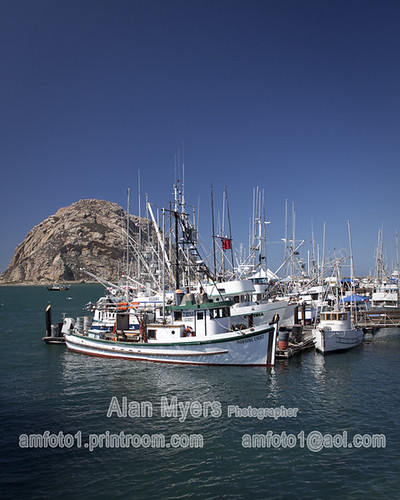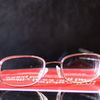Circular Polarizing filter
Mar 23, 2016 06:57:52 #
Mac wrote:
I use screw on soft rubber lens hoods. They screw on to the front threads of the CP filter so you can adjust the CP by turning the hood. I don't know if they come in tulip shape.
For filters, I use B+W brand. Be sure to get multi-coated (MRC).
For filters, I use B+W brand. Be sure to get multi-coated (MRC).
:thumbup: Also, when you're getting the maximum effect from your CPL (90 degrees to sun angle) you'll find that the lens hood doesn't make a lot of difference, since the CPL eliminates stray light anyway. That's how it's so effective in reducing glare and increasing color saturation.
The problem then becomes losing track of your lens hood :wink:
Mar 23, 2016 07:45:47 #
JCam wrote:
I have been considering getting a polarizing filter for use with my Canon 60D & Tamron EF 70-300 f4.0-5.6 DI VC Zoom lens that has a 62mm lens ring.
A CPL will give you great results, especially when you shoot at a 90° angle to the sun. I have a couple of lenses with deep lens hoods, and I just reach inside with one finger and rotate it. You might want to consider getting a Xume magnetic filter holder. Rather than screwing the filters in and out, you just pop them on and off. You can also get adapters to use a large filter on a smaller lens.
http://www.lenstip.com/115.1-article-Polarizing_filters_test.html
http://www.lenstip.com/115.4-article-Polarizing_filters_test_Results_and_summary.html
http://nikonrumors.com/2014/07/26/how-to-use-a-polarizing-filter.aspx/
Mar 23, 2016 10:25:58 #
amfoto1
Loc: San Jose, Calif. USA
JCam wrote:
I have been considering getting a polarizing filte... (show quote)
Definitely consider getting a generic, screw-in "telephoto" hood in 62mm diameter, to use with that filter and lens. That will solve the problem of rotating the CPL... as someone mentioned, you'll be able to rotate the two together. Especially since you are using that 70-300 lens on an APS-C camera, you should be able to use something like this: http://www.bhphotovideo.com/c/product/800764-REG/Heliopan_72062H_62_mm_Metal_Lens.html Heliopan is top of the lines stuff, but for a hood you might find similar for a lot less money by shopping around... I often pick up generic hoods at photo fairs where I can find used for for $3 to $5 and even try them on my lenses to be sure they don't vignette. I found this on Amazon, too: http://www.amazon.com/Universal-Camera-62mm-Aluminum-Tubular/dp/B00EDNGPJU/ref=pd_sim_sbs_421_1?ie=UTF8&dpID=410GyO3MPuL&dpSrc=sims&preST=_AC_UL160_SR160%2C160_&refRID=1J2T8S8TM5JEZ72673EX
Those generic hoods aren't "tulip shaped", but that type really isn't necessary on a telephoto-to-telephoto zoom.... Tulip shape hoods are useful on wide-to-standard-to-short tele and on wide-to-wide zooms. However, on tele zooms they're mostly just for cosmetic purposes.... they "look cool" :roll: (Note: there are generic, screw-in tulip shaped hoods... Avoid those because they all too easily end up misaligned with the image framing and cause vignetting. Tulip hoods need to be bayonet mount, like the one provided with your lens... But then you have the problem easily using a CPL.)
I've used them over the years and really don't recommend rubber hoods... They're generally poor fitting, don't shade the lens very well and they really don't physically protect the lens very well either, simply collapse too easily. Rigid metal is a lot better... rigid, high-impact plastic is best if you can find it.
Definitely get high quality glass and multi-coated filters. Someone mentioned B+W Kaesemann, several of which I use, and those are both. They also are better "edge-sealed" than most, to prevent moisture intrusion between the glass layers. And their frames are made of brass, which is less likely to get stuck on lenses.
Some multi-coatings now have been further improved for durability and easier cleaning... B+W's "MRC-Nano", Hoya HD3 and EVO with their nano multi-coatings are examples. Multi-coated filters can be difficult to clean, particularly oils and sea spray... so shooting what you do this additional/improved "nano" type coating might be a helpful feature, even if it adds a little cost.
Definitely DO NOT get a "thin" filter. Serves no purpose on a telephoto lens, are more expensive than standard, are more likely to get stuck or be difficult to remove from a lens, and often lens caps or screw-in hoods don't work very well with them. In fact some "thin" filters don't have any front threads at all. Besides, if you get B+W, their "standard" have a nice thin mount anyway. I've never needed a "thin", even on ultrawide lenses I've used them with. You certainly won't need a "slim" or "thin" on a 70-300mm.
jerryc41 wrote:
... You might want to consider getting a Xume magnetic filter holder. Rather than screwing the filters in and out, you just pop them on and off. You can also get adapters to use a large filter on a smaller lens....
http://www.lenstip.com/115.1-article-Polarizing_filters_test.html
http://www.lenstip.com/115.4-article-Polarizing_filters_test_Results_and_summary.html
http://www.lenstip.com/115.1-article-Polarizing_filters_test.html
http://www.lenstip.com/115.4-article-Polarizing_filters_test_Results_and_summary.html
Think twice about using anything magnetic around digital media! It's possible to mess up your memory cards, if you get them too close to too strong a magnet.
Step rings are possible... They allow you to use a larger diameter filter. Normally that's a bad idea because it makes using a good-fitting bayonet lens hood impossible... however in this case, if you are using a generic screw-in hood anyway, it might be a good setup. If you have another lens with larger diameter such as 72mm or 77mm, you could use the same filter on both that and this telephoto, by fitting it to the 70-300 with a step ring (which come in various sizes and are cheap).
PhotosBySteve wrote:
...I simply reach my finger in along the side of the hood and rotate the CP filter as I look the the viewfinder or at the LCD. No need for special hoods....
I do that too... with wide angle lenses that use a shallow lens hood. It simply doesn't work with telephotos like a 70-300mm.
PhotosBySteve wrote:
...seldom need to change the setting unless you change orientation to the sun.
That's not the way I use a CPL... If you change the camera orientation from horizontal to vertical, you need to be able to quickly change the CPL setting too. Plus, there often are times when you don't want full polarization. For example for the shot below I backed off my CPL because while I wanted the filter to deepen the blue of the sky and green of the water, I really didn't want it to completely reduce some of the key reflections of the fishing boats on the water...

I am constantly changing my camera orientation and adjusting CPL when I'm using one, observing its effect in the viewfinder. It's a pain in the arse to have to remove the lens hood every time the filter needs adjustment.... so, since one will work fine on a telephoto zoom, just buy a nice, deep, screw-in hood and be done with it!
Mar 23, 2016 10:26:01 #
TonyF
Loc: Bradenton, FL
Boone wrote:
Try this hood. I use them with a CP all the time. As already said, when you turn the hood, you are also adjusting the CP. Tip: I put a small piece (about 1") of electrical tape on the connection point of the hood and CP to make sure they stay connected without having to over tighten the hood.
Amazon: http://www.amazon.com/gp/product/B00603RZCM?psc=1&redirect=true&ref_=oh_aui_detailpage_o05_s00
Thanks, Boone.
Amazon: http://www.amazon.com/gp/product/B00603RZCM?psc=1&redirect=true&ref_=oh_aui_detailpage_o05_s00
Thanks, Boone.
Thanks for the link, much appreciated!
Mar 23, 2016 10:40:40 #
Personally I use Hoya filters, screw on type,with the original lens hood. I simply reach my finger in along the side of the hood and rotate the CP filter as I look the the viewfinder or at the LCD. No need for special hoods. The is seldom need to change the setting unless you change orientation to the sun.
Mar 23, 2016 10:43:28 #
I set my circular polarizer to max polarization and then mark the outside ring with a silver sharpie. Also, mark the 180 degree point also as this will also provide max polarization. In the future, turn the ring so that the mark points to the sun, put your hood on and you are done.
Mar 23, 2016 11:07:27 #
I don't think this is correct as each location changes.
J. R.
J. R.
Bullfrog Bill wrote:
I set my circular polarizer to max polarization and then mark the outside ring with a silver sharpie. Also, mark the 180 degree point also as this will also provide max polarization. In the future, turn the ring so that the mark points to the sun, put your hood on and you are done.
Mar 23, 2016 11:39:39 #
I use the B W filters, no complaints. I think the polarizers are a necessity around water. I haven't found any PP program to duplicate their effects as well.
No one asked but I'm telling you anyway. Use a very very small amount of silicon grease on the threads of all of your filters. I have seen a lot of lenses ruined because of filters corroded to lenses and people using a pair of pliers to get the filter off. Better safe than sorry.
Good shooting.
No one asked but I'm telling you anyway. Use a very very small amount of silicon grease on the threads of all of your filters. I have seen a lot of lenses ruined because of filters corroded to lenses and people using a pair of pliers to get the filter off. Better safe than sorry.
Good shooting.
Mar 23, 2016 11:47:50 #
My suggestion, dont buy a cheap CPL, you buy cheap, you get cheap. I bought one for a few bucks, yes it works but not well. Ive seen them from $10.00 to almost $600.00
so buy the best you can afford. as for the hood, I like the idea of buying a second hood and cutting it...
so buy the best you can afford. as for the hood, I like the idea of buying a second hood and cutting it...
Mar 23, 2016 11:52:36 #
TonyF
Loc: Bradenton, FL
mmeador wrote:
I use the B W filters, no complaints. I think the polarizers are a necessity around water. I haven't found any PP program to duplicate their effects as well.
No one asked but I'm telling you anyway. Use a very very small amount of silicon grease on the threads of all of your filters. I have seen a lot of lenses ruined because of filters corroded to lenses and people using a pair of pliers to get the filter off. Better safe than sorry.
Good shooting.
No one asked but I'm telling you anyway. Use a very very small amount of silicon grease on the threads of all of your filters. I have seen a lot of lenses ruined because of filters corroded to lenses and people using a pair of pliers to get the filter off. Better safe than sorry.
Good shooting.
By silicone grease, do you mean a solid substance that comes in a jar/small can or a spray like WD40? And if a spray, I would assume you spray on a piece of paper and use your finger to apply just a little?
Mar 23, 2016 12:04:27 #
Never ever use WD40, it is not a lubricant and don't use a spray. I use fishing reel silicon grease but I think you can get silicon grease from a camera shop also. You will probably lose the tube before you could use it all.
Just wipe the nozzle of the tube with your finger, run that along the threads of your filter. All you need is a film.
If you took a lens apart you would find it filled with silicon grease, that is what makes the action so silky smooth.
Just wipe the nozzle of the tube with your finger, run that along the threads of your filter. All you need is a film.
If you took a lens apart you would find it filled with silicon grease, that is what makes the action so silky smooth.
Mar 23, 2016 12:21:00 #
amfoto1
Loc: San Jose, Calif. USA
jerryc41 wrote:
Beware that test/comparison at the Lens Tip website... There are new brands, improved multi-coatings and different model names now, none of which are included in the testing that was done in 2009. And, somehow the B+W Kaesemann filter they tested was a mis-labelled linear polarizer, instead of a circular such as is needed by modern auto focus and TTL metering cameras. They really should have gotten a replacement for that filter and rerun the tests with it. Instead they just "disqualified" it.
mmeador wrote:
...Use a very very small amount of silicon grease on the threads of all of your filters. I have seen a lot of lenses ruined because of filters corroded to lenses and people using a pair of pliers to get the filter off. Better safe than sorry...
No, no, NO! No grease, please!
No WD-40 either! And definitely NOT any sort of spray!
Grease or oil or WD-40 will almost certainly end up on the glass of the filter, you can bet.
Instead, if anything use a little graphite powder and dust off any extra.
Paraffin or bee's wax - such as a candle - also can be rubbed lightly on filter threads to lubricate them, with a lot less risk of anything ending up on the glass.
But, all but the cheapest B+W filters are in brass mounts, specifically to help prevent metal-to-metal "galling" and stuck filters. Some other manufacturers also use brass.
But even if aluminum, just carry a couple rubber bands with you, in your camera bag, to give you better grip on both the barrel of the lens and the filter, if ever needed.
Many lenses today use plastic filter threads, anyway, which almost never get stuck.
But, if a filter ever does get seriously stuck, there are special filter wrenches just for the purpose of removing them. No need to use pliers and damage either the filter or the lens. If you don't want to buy filter wrenches, many camera repair shops or even well-equipped photo stores have them on hand and will help you for a couple $, or even for free.
Even if none of the above works, in really severely stuck filter cases on a few occasions I've carefully broken the glass out of the filter, then cut and bent its frame to be able to remove it, all without any damage to the lens.
Mar 23, 2016 12:50:23 #
amfoto1 wrote:
No, no, NO! No grease, please!
No WD-40 either! And definitely NOT any sort of spray!
Grease or oil or WD-40 will almost certainly end up on the glass of the filter, you can bet.
No WD-40 either! And definitely NOT any sort of spray!
Grease or oil or WD-40 will almost certainly end up on the glass of the filter, you can bet.
Couldn't agree more. Any form of grease will migrate over time. You can't predict what effect it will have on lens coatings or on the cement used around the edges of or between lens elements.
Mar 23, 2016 13:04:03 #
amphoto1 wrote:"Think twice about using anything magnetic around digital media! It's possible to mess up your memory cards, if you get them too close to too strong a magnet."
I think you are confusing technologies here. While hard drives rely upon the orientation of magnetic domains to store 1s and 0s, memory chips, both Flash and DRAM depend upon the transport of charge (electrons) to or from a floating gate in the memory cell. A relatively strong magnet can interfere with hard drive data, but you would not want to be near a magnet strong enough to affect Flash memory devices.
I think you are confusing technologies here. While hard drives rely upon the orientation of magnetic domains to store 1s and 0s, memory chips, both Flash and DRAM depend upon the transport of charge (electrons) to or from a floating gate in the memory cell. A relatively strong magnet can interfere with hard drive data, but you would not want to be near a magnet strong enough to affect Flash memory devices.
Mar 23, 2016 13:59:41 #
Keldon wrote:
You also enquired about the thin filters, something I don't believe nyone addressed. I would stay away from them if possible. I have found that a lens cap doesn't grab the thin filters properly and you risk losing the cap.....frequently.
Yes, thin filters are for UWA lenses, not the tele-zoom you inquired about.
If you want to reply, then register here. Registration is free and your account is created instantly, so you can post right away.





